Transform your kitchen from ordinary to extraordinary with these five must-have kitchen cabinet trends. This year’s hottest designs offer a blend of modern aesthetics and practical functionality, allowing you to create a space that’s both stylish and highly efficient. Discover the latest innovations in cabinet materials, hardware, and design styles that will elevate your kitchen to the next level and increase your home’s value. Learn how to incorporate these on-trend kitchen cabinet ideas to achieve your dream kitchen.
Flat Panel Cabinets
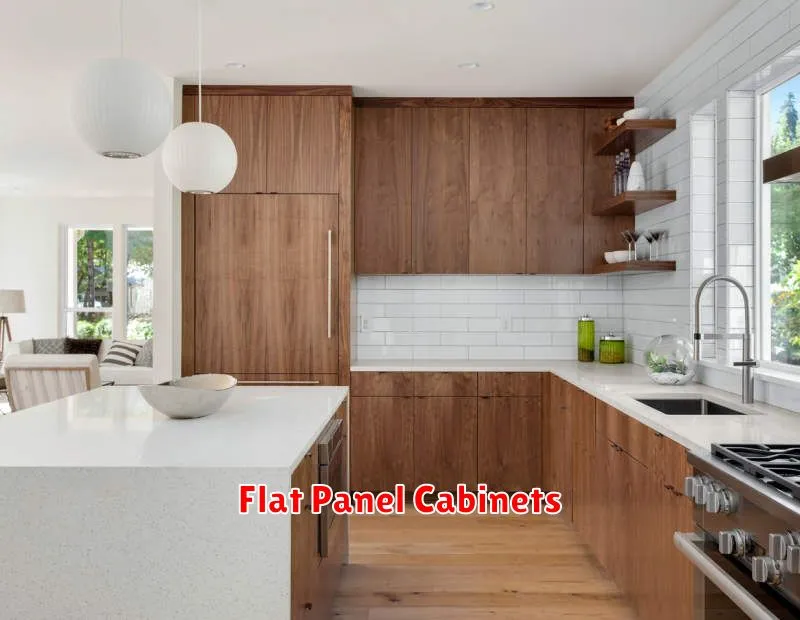
Flat panel cabinets offer a clean, minimalist aesthetic that is increasingly popular in modern kitchen and bathroom designs. Their simple, unfussy style lends itself to a variety of design schemes, from contemporary to traditional, making them a versatile choice for homeowners.
A key characteristic of flat panel cabinets is their lack of ornamentation. Unlike raised panel or shaker-style cabinets, flat panel doors feature a completely flat surface, creating a sleek and sophisticated look. This simplicity allows the cabinet’s material and finish to take center stage, highlighting the quality and craftsmanship.
The smooth surface of flat panel cabinets is also easy to clean and maintain, making them a practical choice for busy households. Dust and grime are less likely to accumulate in crevices, contributing to a cleaner and more hygienic environment. This ease of maintenance is a significant advantage for those seeking low-effort upkeep.
While the minimalist design might seem limiting, flat panel cabinets offer extensive customization options. A wide range of materials, colors, and finishes are available, allowing homeowners to perfectly match their cabinets to their existing décor or create a completely unique look. Hardware choices can also be used to add subtle personality.
Durability is another key consideration when selecting cabinets. Flat panel cabinets, when constructed with high-quality materials and proper craftsmanship, are built to last, offering years of reliable service. Investing in well-made flat panel cabinets is a worthwhile investment for any homeowner.
In summary, flat panel cabinets provide a compelling blend of style, practicality, and durability. Their clean lines, ease of maintenance, and customization options make them an excellent choice for anyone looking to upgrade their kitchen or bathroom with a modern and timeless aesthetic.
Matte Finish Options
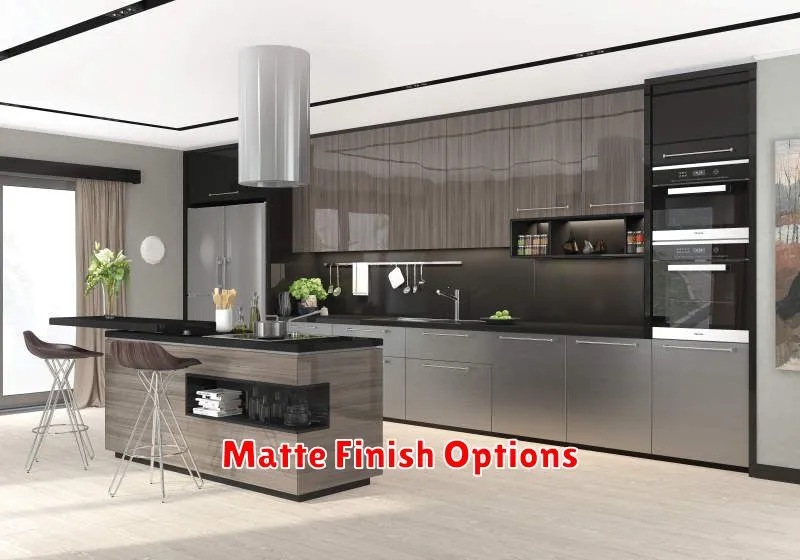
Matte finishes offer a sophisticated alternative to glossy surfaces, providing a unique aesthetic appeal across various applications. The absence of shine creates a subtle, understated elegance, often preferred for its versatility and ability to complement diverse design styles.
Several factors contribute to the desirability of matte finishes. Firstly, they minimize glare and reflections, enhancing readability in applications like printed materials or digital displays. This is particularly beneficial in brightly lit environments where glare can be distracting or hinder usability.
Secondly, matte finishes often exhibit a more refined texture. The subtle surface irregularities contribute to a tactile experience that differs significantly from the smooth, sometimes slippery feel of glossy counterparts. This tactile element can enhance the overall perceived quality of a product.
Thirdly, durability is a key consideration. While the perception might be that matte finishes are more prone to scratching, advancements in technology have resulted in formulations that offer excellent scratch resistance. Appropriate protective coatings can further enhance the longevity of matte surfaces.
The choice of a matte finish depends heavily on the intended application. From subtle automotive paint jobs to sophisticated smartphone casings, the versatility of matte finishes allows for a wide range of creative expression. The subdued elegance and practical benefits make it a popular choice for designers and manufacturers alike.
Ultimately, the decision between a matte and glossy finish is a stylistic one, dependent on the desired aesthetic and practical requirements. However, the increasing popularity of matte options highlights their significant contribution to modern design.
Glass Door Cabinets
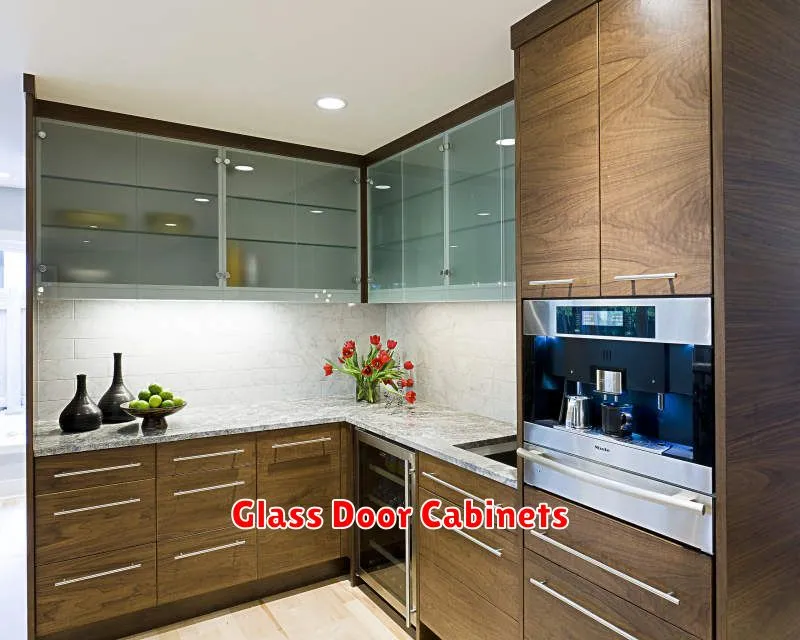
Glass door cabinets offer a unique blend of functionality and aesthetic appeal, making them a popular choice for various settings. Their transparent fronts allow for the display of cherished items while simultaneously providing efficient storage.
One of the key advantages of glass door cabinets lies in their ability to showcase collections. Whether it’s fine china, glassware, or prized collectibles, these cabinets provide an elegant way to display and protect these items. The visibility offered encourages appreciation and prevents items from being forgotten in the back of a dark cupboard.
Beyond aesthetics, practicality is another significant benefit. Glass doors provide easy access to stored items, eliminating the need to rummage through drawers or opaque cabinets. This ease of access is particularly valuable in kitchens where frequently used items can be readily available.
However, it’s crucial to consider the potential drawbacks. Glass doors require more careful cleaning and maintenance to prevent smudges and fingerprints from detracting from their appearance. Additionally, the transparency might not be suitable for storing items that are sensitive to light, such as certain foods or medications.
Material choices also play a significant role in the overall quality and longevity of a glass door cabinet. The frame material, whether wood, metal, or a composite, impacts both the cabinet’s durability and its aesthetic integration into the surrounding décor. The type of glass used, including its thickness and any potential treatments, affects its resistance to breakage and clarity.
Ultimately, the decision of whether or not to incorporate glass door cabinets into a space depends on individual needs and preferences. Weighing the benefits of display and accessibility against the considerations of maintenance and light sensitivity is vital for making an informed choice.
Two-Tone Designs
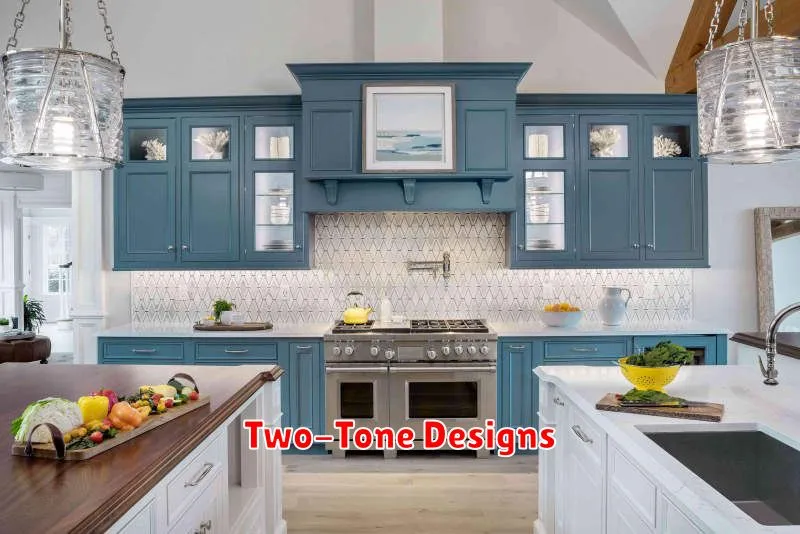
Two-tone designs are a popular aesthetic choice across various design disciplines, from graphic design and web design to interior design and fashion. They offer a sophisticated and visually appealing way to incorporate contrast and visual interest into a project.
The effectiveness of a two-tone design hinges on the careful selection of the two colors. The chosen hues should complement each other, creating a harmonious balance. Contrasting colors, such as a bold primary and a muted neutral, can generate a striking effect. Alternatively, analogous colors—those situated next to each other on the color wheel—can produce a more subtle and elegant outcome.
Beyond color selection, the application of the two tones is crucial. This can range from a simple split between two distinct areas to a more intricate gradient or pattern. Consider the ratio of each color’s usage; a dominant color coupled with a smaller accent color, for instance, creates a different impact than an even split. The distribution and interaction between the colors play a key role in shaping the overall perception and impact.
Practical considerations for implementing two-tone designs include understanding the context and target audience. The choice of colors and their application should align with the project’s purpose and appeal to its intended viewers. The design should also be accessible and legible, ensuring that text and other important visual elements remain clear and easy to discern against the chosen color palette.
In conclusion, successful two-tone design involves thoughtful consideration of color selection, application techniques, and the overall context. When executed effectively, this approach offers a versatile and visually engaging method to enhance the aesthetics of a project across a diverse range of mediums.
Hidden Handles for a Sleek Look
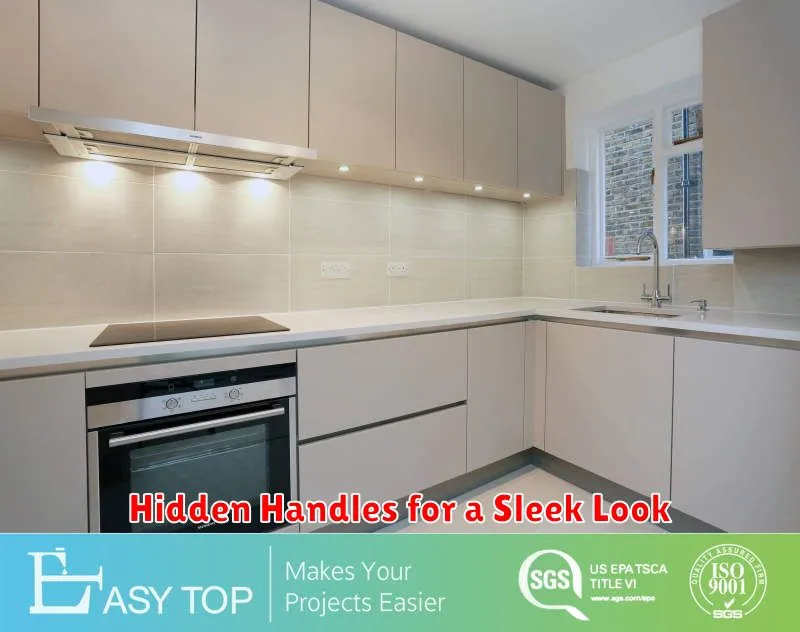
Hidden handles are a popular design choice for achieving a clean, minimalist aesthetic in kitchens and bathrooms. They eliminate the visual clutter of traditional knobs and pulls, creating a seamless and sophisticated look.
The benefits extend beyond aesthetics. Hidden handle systems often contribute to a more modern and streamlined feel, perfect for contemporary design styles. This minimalist approach allows other design elements, such as cabinetry details or countertops, to take center stage.
However, there are practical considerations. While visually appealing, hidden handles require careful planning and installation. The mechanisms need to be precisely integrated into the cabinetry, ensuring smooth operation and ease of use. This often involves specialized hardware and potentially increased installation costs compared to standard handles.
Functionality is key. Different hidden handle systems offer varying degrees of ease of use. Some designs might require a precise grip or pressure, while others incorporate more intuitive opening mechanisms. Choosing the right system depends on factors such as cabinet size, door weight, and the frequency of use.
Durability is another important aspect. Hidden handle systems, like any other hardware, need to withstand regular use and potential wear and tear. Opting for high-quality materials and reputable manufacturers is crucial to ensure longevity and prevent premature failure.
In conclusion, while hidden handles add a touch of elegance and sophistication to any space, careful consideration of functionality, ease of use, and long-term durability is essential before making this design choice. Weighing the aesthetic benefits against the potential practical challenges will ensure a successful and satisfying outcome.

